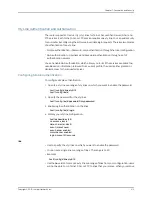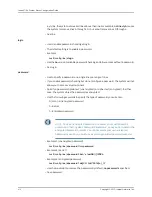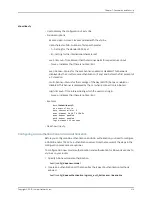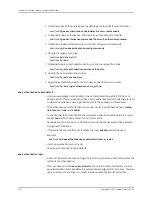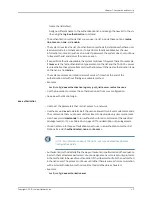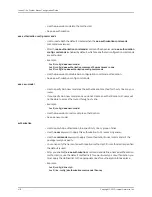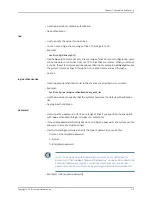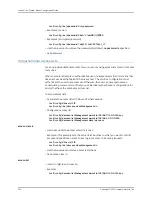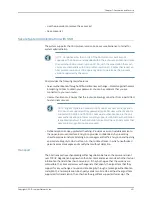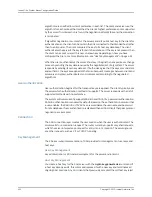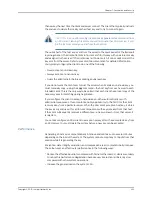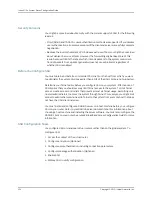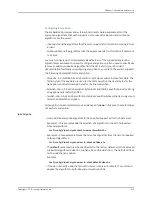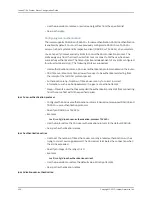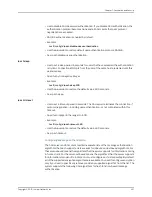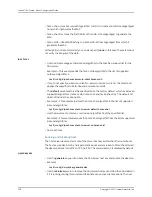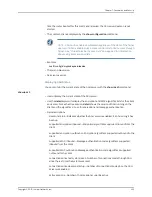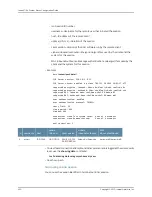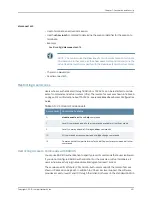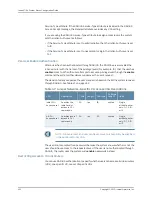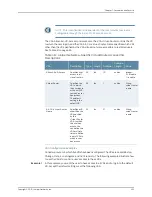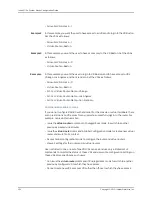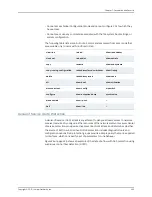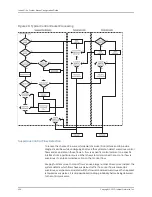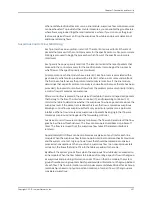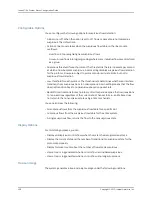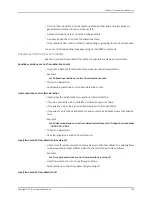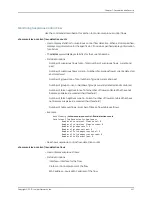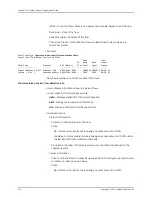
•
Use to disable SSH password authentication. If you disable SSH authentication, the
authentication protocol becomes None and all SSH clients that pass protocol
negotiation are accepted.
•
RADIUS authentication is enabled by default.
•
Example
host1(config)#
ip ssh disable-user-authentication
•
Use the
no
version to restore default user authentication protocol, RADIUS.
•
See ip ssh disable-user-authentication.
ip ssh sleep
•
Use to set a sleep period in seconds for users that have exceeded the authentication
retry limit. Connection attempts from the user at the same host are denied until this
period expires.
•
Specify any nonnegative integer.
•
Example
host1(config)#
ip ssh sleep 300
•
Use the
no
version to restore the default value, 600 seconds.
•
See ip ssh sleep.
ip ssh timeout
•
Use to set a timeout period in seconds. The SSH server terminates the connection if
protocol negotiation—including user authentication—is not completed within this
timeout.
•
Specify an integer in the range 10–600.
•
Example
host1(config)#
ip ssh timeout 480
•
Use the
no
version to restore the default value, 600 seconds.
•
See ip ssh timeout.
Configuring Message Authentication
The SSH server and SSH client maintain separate lists of the message authentication
algorithms that each supports. Lists are kept for
inbound
and
outbound
algorithms. For
the server,
inbound
means the algorithms that the server supports for information coming
in from a client. For the server,
outbound
means the algorithms that the server supports
for information it sends out to a client. You must configure each list separately. By default,
all of the supported encryption algorithms are available. You need to configure encryption
only if you need to specifically remove or add any supported algorithm from the list. The
system supports the following SSH algorithms for hash function-based message
authentication:
427
Copyright © 2010, Juniper Networks, Inc.
Chapter 7: Passwords and Security
Summary of Contents for JUNOSE 11.3
Page 6: ...Copyright 2010 Juniper Networks Inc vi...
Page 8: ...Copyright 2010 Juniper Networks Inc viii JunosE 11 3 x System Basics Configuration Guide...
Page 24: ...Copyright 2010 Juniper Networks Inc xxiv JunosE 11 3 x System Basics Configuration Guide...
Page 32: ...Copyright 2010 Juniper Networks Inc 2 JunosE 11 3 x System Basics Configuration Guide...
Page 146: ...Copyright 2010 Juniper Networks Inc 116 JunosE 11 3 x System Basics Configuration Guide...
Page 166: ...Copyright 2010 Juniper Networks Inc 136 JunosE 11 3 x System Basics Configuration Guide...
Page 432: ...Copyright 2010 Juniper Networks Inc 402 JunosE 11 3 x System Basics Configuration Guide...
Page 488: ...Copyright 2010 Juniper Networks Inc 458 JunosE 11 3 x System Basics Configuration Guide...
Page 524: ...Copyright 2010 Juniper Networks Inc 494 JunosE 11 3 x System Basics Configuration Guide...
Page 554: ...Copyright 2010 Juniper Networks Inc 524 JunosE 11 3 x System Basics Configuration Guide...
Page 566: ...Copyright 2010 Juniper Networks Inc 536 JunosE 11 3 x System Basics Configuration Guide...
Page 588: ...Copyright 2010 Juniper Networks Inc 558 JunosE 11 3 x System Basics Configuration Guide...
Page 613: ...PART 3 Index Index on page 585 583 Copyright 2010 Juniper Networks Inc...
Page 614: ...Copyright 2010 Juniper Networks Inc 584 JunosE 11 3 x System Basics Configuration Guide...
Page 632: ...Copyright 2010 Juniper Networks Inc 602 JunosE 11 3 x System Basics Configuration Guide...

